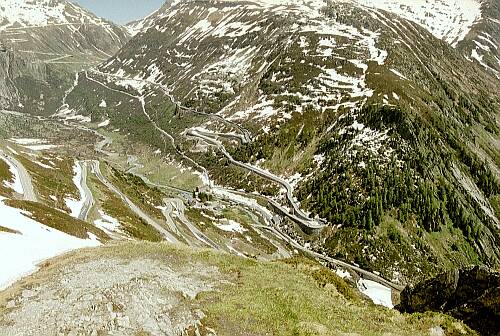|
The
ice
ages
occurred
during
the
quaternary
era,
the
last
great
geological
epoch,
Large
areas
advanced
were
covered
with
ice,
which
advanced
and
retreated
a
number
of
times.
In
some
places
the
ice
layer
was
up
to
ten
thousand
feet
thick.
Today’s
glaciers
are
modest
remnants
of
those
great
regions
of
ice
which,
for
thousands of
years,
determined
the
composition
of
local
flora
and
fauna
and
the
development
of
prehistoric
cultures. The
advance
and
retreat
of
the
ice
resulted
in
corresponding
fluctuations
in
the
levels
of
the
seas
and
rivers.
This
is
easily
explains
by
the
fact
that
the
ice
sheets
and
glaciers
were
formed
principally
of
water
that
had
evaporated
from
the
oceans.
Study
of
river
and
sea
terraces
has
enables
specialists
to
estimate
the
precise
extent
these
geological
events.
Today
it
is
known
that
an
ice
age
was
not
brought
about
by
a
considerable
reduction
in
temperatures,
but
by
a
heavy
increase
in
precipitation.
The
process
is
very
simple.
It
begins
with
heavy
falls
of
snow
on
the
highest
peaks.
The
snow
is
exposed
to
a
continual
process
of
melting
during
the
day
and
reversing
at
night,
and
is
converted
first
into
granular
ice,
or
névé,
and
then
into
a
compact
layer
of
ice,
from
which
the
glacier
emerges.
It
is
fed
from
altitudes
between
about
7,00
and
8,200
ft
–
above
the
present-dey
perpetual
snowline
which
varies
from
region
to
region
depending
on
exposure
to
sun
and
the
severity
of
the
climate. Being
continually
replenished
from
above,
the
glaciers
move
inexorably
downwards,
spreading
out
in
the
plains,
and
only
stopping
when
the
temperatures
either
drop
to
unusually
low
levels,
or
rise. the
upper
course
of
a
glacier
is
characterised
by
rough
of
névé
and
frozen
waterfalls
.Then
the
gradient
becomes
less
steep,
and
the
glacier
finally
flows
into
the
valley,
the
tips
usually
being
tongue-shaped.
A
glacier
carries
with
it
considerable
quantities
of
debris
which
it
has
torn
the
rocks:
sand,
gravel,
and
sometimes
blocks
of
stone
of
considerable
size,
which
form
the
lateral,
and
terminal
moraines.
Some
of
the
large
blocks
fall
into
transverse
and
longitudinal
crevasse
and
are
gradually
drawn
down
to
the
ground
of
the
glacier.
Together
with
the
moraines
and
the
glacier
itself
the
erode
the
floor
of
the
valley.
The
glaciers
that
poured
down
the
Alpine
valleys
in
prehistoric
times
spread
far
out
onto
the
plains.
As
They
retreated
they
left
behind
them
impressive
erratic
blocks
of
stone
with
bizarre
shapes
that
were
the
source
of
much
folklore.
The
glacial
movements
deepened
and
widened
the
valleys
into
lakes. Water
and
ice
work
differently.
Water
hollows
out
rock
and
lends
the
valley
a
V-shape.
A
Glacier
patently
removes
the
softer
rock,
but
only
planes
and
smoothes
the
harder
rock,
forming
more
or
less
deep,
elegant
basins;
the
are
topped
by
jagged
ridges
interspersed
with
small,
crystal-clear
lakes. A
glacier
is
not
troubled
by
obstacles:
it
climbs
over
them
without
difficulty.
It
slowly
but
surely
snakes
though
narrow
gorges
and
gaps
between
mountain
massifs,
leaving
characteristic
scratches
and
furrows
on
the
bare,
rounded
rock. Today
the
glaciers
appear
to
be
in
retreat.
The
extent
of
this
movement
can
be
seen
at Gletsch,
where
the
famous
hotel,
once
close
to
the
tip
of
the
Rhône
glacier,
is
now
hundred
of
yards
below
the
terminal
moraine.
And
yet
periods
of
growth
have
also
been
observed
after
particularly
cool
and
rainy
summers,
especially
between
1920
and
1950.
Nearly
everywhere
in
the
Alps
the
upper
limit
of
the
quaternary
glaciers
at
the
time
of
their
greatest
expansion
can
be
seen
from
the
sharp
line
dividing
the
high,
jaggedly
eroded
peaks
from
the
rocks
moulded
into
smooth
undulations
by
thousands
of
year
of
glacial
activity.
|

Gletsch
|
|